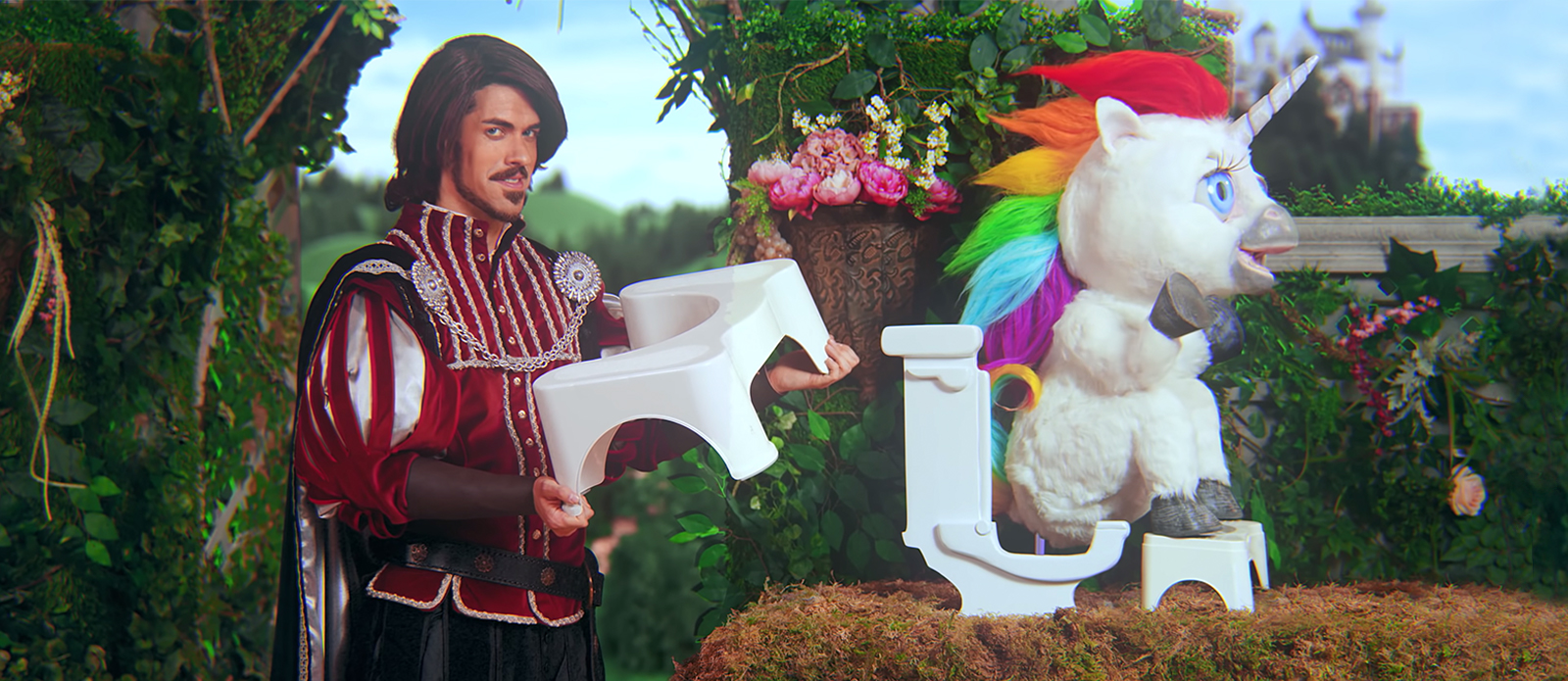Camp is an often misunderstood aesthetic, primarily found in film and fashion, that champions style over content, irony over drama, extravagance over seriousness, and it has solidified its place in digital advertising.
If you’re a film buff or if you follow the fashion industry, you’ve probably heard the term “Camp,” before, but for everyone else, Camp is an aesthetic style that might be difficult to understand. Our goal is to explain the Camp aesthetic and its place in today’s advertising landscape.
Camp in Fashion
The Met Gala is an annual fundraising event for the Metropolitan Museum of Art's Costume Institute in New York City. Every year the world’s most captivating celebrities and icons don costumes in line with the theme of that year's Costume Institute exhibit.
This year, the theme was “Camp: Notes on Fashion” inspired by the writings of Susan Sontag’s essay Notes on Camp. According to the official Met Gala website, the exhibit, “examines how the elements of irony, humor, parody, pastiche, artifice, theatricality, and exaggeration are expressed in fashion.”
In her essay, Sontag describes the essence of Camp as, “its love of the unnatural: of artifice and exaggeration.” Camp, “converts the serious into the frivolous” and “the way of Camp is not in terms of beauty, but in terms of the degree of artifice, or stylization.” One of the best examples of Camp, not only personified as a person, but in their manner of dress is Lady Gaga at the Met Gala.
Lady Gaga epitomizes the hallmark of camp’s “spirit of extravagance” and shocking excess.
Camp in Film
Have you ever seen a movie that is so bad that it’s good? Something so laughably terrible that you can’t take your eyes away? This is generally referred to as naive camp, or when someone is completely serious and unaware of the tastelessness of their work.
Naive Camp
The best example of this is The Room by Tommy Wiseau. What makes this movie exceptionally campy is that the situations throughout the movie would never happen in real life, and yet Wiseau – who wrote, directed, and starred in the cult classic – was genuine. Watch just how painfully sincere Tommy is in The Room.
“In naive, or pure, Camp, the essential element is seriousness, a seriousness that fails. Of course, not all seriousness that fails can be redeemed as Camp. Only that which has the proper mixture of the exaggerated, the fantastic, the passionate, and the naive,” Sontag explains.
Deliberate Camp
Rob Reiner's 1987 classic, The Princess Bride and Wes Anderson's Grand Budapest Hotel are two great examples of deliberate Camp in film.
The Princess Bride epitomizes Sontag's definition of Camp as, “being-as-playing-a-role.” The Princess Bride tactfully uses theatre and overt dramatizations to takes scenes to their illogical extremes.
Sontag explains that Camp is, "the farthest extension, in sensibility, of the metaphor of life is theatre,” which is so expertly portrayed by Wes Anderson in the Grand Budapest Hotel by his use decorative sets, extravagant wardrobes, and the freedom which comes with a fictional setting to be somewhat "frivolous about the serious."
Campy Advertising
Sontag says, “the two pioneering forces of modern sensibility are Jewish moral seriousness and homosexual aestheticism and irony.” When we look at the evolution of advertising over the last 60 years, we see this unfold.
Historically, ads often led with the product’s benefits, spoke directly to the needs of the consumer, and appealed to our logical brain. Nowadays, advertising extends way beyond benefits to the bizarre, but this idea of “‘style’ over ‘content,’ aesthetics over ‘morality,' of irony over tragedy,” plays well in contemporary digital advertising.
Just look at how far brands go to win the Super Bowl advertising battle.
Old Spice Advertising
One of the brands that leans into camp well is Old Spice. Part of Sontag’s definition includes “corny flamboyant female-ness” and “exaggerated he-man-ness,” as traits of Camp. Remember the mom song ad? This ad expresses symptoms of camp such as its theatrical, extravagant, and over the top nature.
And on the “exaggerated he-man-ness” side, we have Old Spice’s famous “The Man Your Man Could Smell Like” commercials, which ranked #4 on AdAge's Top 15 Ad Campaigns of the 21st Century.
Go behind the scenes of Old Spice commercials.
Or one of my personal favorites, the "Terry Chest Drum." Show me a more absurd, campy advertisement.
As Susan Sontag says, “the whole point of Camp is to dethrone the serious,” and it is perfect for products which are necessary, but not exciting, sexy, or fun. Imagine if Old Spice just focused on the benefits of their underarm antiperspirant? It’d be a snooze.
Squatty Potty
I challenge anyone to find more anti-serious, over-the-top, and downright ridiculous commercials than the ads created for the Squatty Potty, a bathroom footstool for well, passing stool.
In episode #1, a plush unicorn poops rainbow ice cream, in episode #2 Victorian women use “Unicorn Gold” (unicorn farts) to dispel bathroom smells, and episode #3 features mermen, centaurs, and dragons.
Sontag writes, “I am strongly drawn to Camp, and almost as strongly offended by it,” which encapsulates my feelings toward the Squatty Potty. “Camp is playful, anti-serious,” and when you’re trying to sell a toilet footstool, seriousness goes out the open window.
We must give the Squatty Potty credit; they’ve sold over 5 million units since they introduced the world to Dookie The Pooping Unicorn. “Camp taste is, above all, a mode of enjoyment, of appreciation - not judgment,” and when we take off our politically correct glasses and see the Squatty Potty for what it is, these grotesque, campy advertisements are extremely effective.
Naive Camp in Advertising
There is naive camp in advertising too. Go to YouTube and search “funny local commercials” and you’ll see what I mean. What makes these local advertisements naive Camp? The earnest attempt to make a good commercial. Bad local television ads are also parodied by comedians like Tim and Eric or Justin Roiland and Dan Harmon of Rick and Morty in their “Inter-dimensional Cable” episodes.
Notes on Camp in Digital Advertising
Camp in advertising, like movies, is theatrical and exaggerated yet realistic given what it is. Sure, rainbow unicorns will never poop ice cream in real life, but if we suspend disbelief for a moment, we can appreciate the sincerity with which the commercials were executed.
Just watch the Subway ad that inspired this article. This ad isn’t campy, it’s just plain bad, or as Sontag would say, “it is too mediocre in ambition.”
Camp is an aesthetic style that entertains us, bringing levity to a space overrun with competition and seriousness. As consumers, we fall in love with brands that go way above what is necessary just to delight us and try to win over our hearts.
Deep down, we don’t hate advertising; we hate bad advertising. If a brand goes above and beyond to court us, even if the commercial is bizarre and disturbing, deep down we appreciate the attention. Or as Susan Sontag puts it, “Camp is generous. It wants to enjoy. It only seems like malice, cynicism.”
Download your complimentary Brand Manifesto Workbook today!










